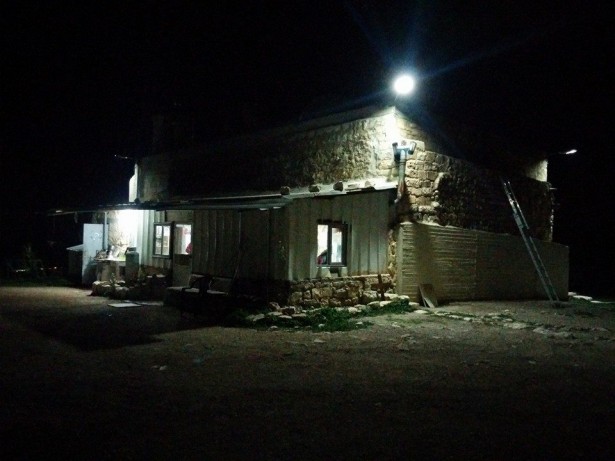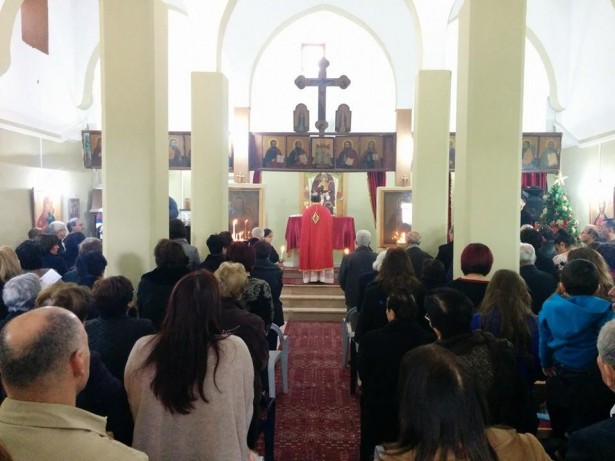

| Online: | |
| Visits: | |
| Stories: |

| Story Views | |
| Now: | |
| Last Hour: | |
| Last 24 Hours: | |
| Total: | |
Church of demolished Palestinian village gets Israeli electricity for Christmas
On December 22, the only building still standing in the Palestinian Christian village of Iqrit was connected to the Israeli electricity grid. This unprecedented move is part of the Iqritis’ larger struggle for their right to return and it carries implications far beyond the electricity itself.
Iqrit is located in the Galilee, in northern Israel proper, just south of the Lebanese border. It was evacuated 67 years ago during the Nakba, the ethnic cleansing of Palestine, also known as Israel’s War of Independence, which made way for the 1948 establishment of the State of Israel.
What makes Iqrit stand out from the hundreds of Palestinian villages that suffered a similar fate, however, is its unique legal advantage — a 1951 Israeli Supreme Court ruling and 1995 ministerial committee recommendation that reinforced their right to return — combined with the fact that their land has not been physically covered by any Jewish Israeli development.
Sixty-four years ago, on Christmas Eve 1951, the entire village — except for its St. Mary’s Church and its cemetery — was bombed by the newly-established Israel Defense Forces, despite the aforementioned Supreme Court ruling from July of that same year. But this past Christmas, Iqritis were able to celebrate an entirely different kind of gift that other displaced Palestinians can only dream about.
While incessantly struggling over decades for their right to return, as I reported for Waging Nonviolence in August, Iqrit’s internally displaced families have periodically returned to host holiday services, cultural events, tourist group visits and an annual educational summer camp for the youngest generation of descendants. Last August marked three years since a group of Iqriti youth, mostly comprised of working students, decided to permanently return with a 24/7 presence in their church. They and the larger Iqriti community have managed to function with solar panels and a generator, thriving in spite of heavy restrictions on their lifestyle and frequent disruptions from the Israel Land Administration, or ILA, which claims ownership of the land.
After three years of legal maneuvering and 11 years since their original request for connectivity, the Israeli Supreme Court decided in April 2015 that Iqrit’s church could join the national Israeli electricity grid. Many were rightfully skeptical that this would be realized, but after going through the necessary bureaucratic moves over the past months, installation began on December 16 and was completed on December 22 — just in time to illuminate their Christmas tree for their annual mass, which has also served to commemorate Iqrit’s Christmas Eve destruction.
According to Amir Toume, a 21-year-old student who plays an active role in the on-the-ground group, this recent connection to the electrical grid not only facilitates their ability to function normally and organize more efficiently, but also marks their “first and most important win against the ILA,” indicating that the State of Israel has informally recognized their right to live and pray on their land. Nemi Ashkar, head of the Iqrit Community Association, or ICA, also said the Supreme Court ruling was confirmation that they are indeed the legal owners of the land in a way that has never before been seen in any displaced Palestinian village.
ICA member Shadia Sbait said it felt strange to see construction taking place where they have become accustomed to seeing destruction. She also noted the spiritual feeling that presided over their usual Christmas mass. This time, their service took place “without the noise of the generator outside and with the knowledge that [they] won.”

Israeli-powered light at St. Mary’s on December 22, the first night of connectivity. (Facebook / Iqrit)
Although just one step in their struggle, it is indeed a significant landmark that Ashkar feels brings hope that the return to Iqrit is within reach. It also gives them courage to continue following the legal track, of which the next step will be to regain ownership of their cemetery. Of course, they will continue to pursue all other methods, including their on-the-ground organizing and international advocacy. Toume feels that receiving electricity has already changed life at Iqrit in a way that will continue to empower them to use more creative methods in their struggle.
As for the solar panels that have now been rendered unnecessary, Sbait said, “they will be an important part of the Iqrit museum after we achieve the return.”
People-powered news and analysis
Source: http://wagingnonviolence.org/2016/01/church-of-demolished-palestinian-village-gets-israeli-electricity-for-christmas/




